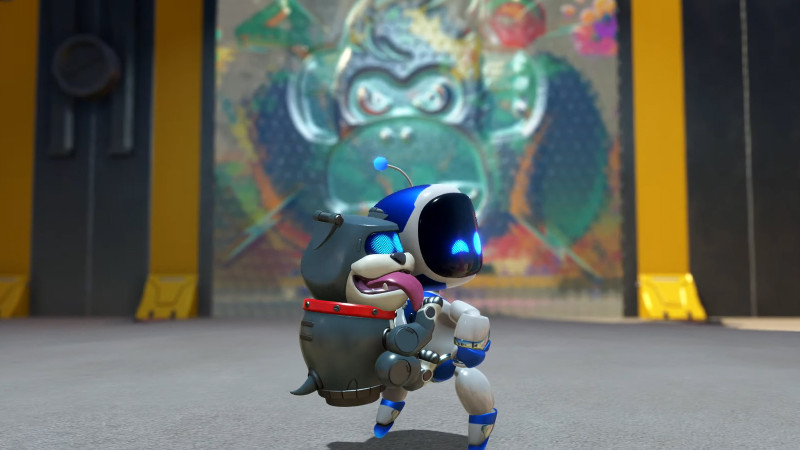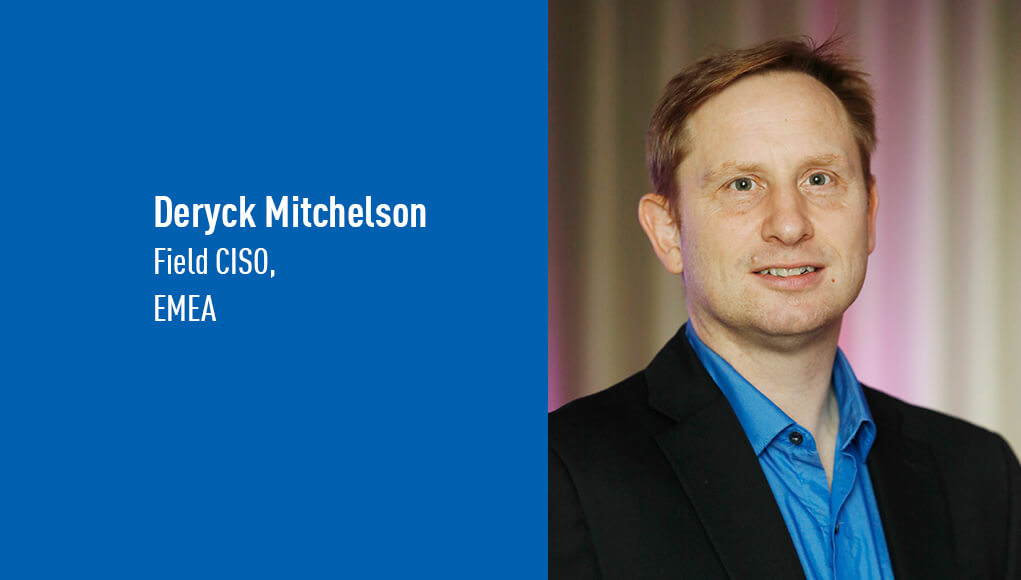AI and gaming merge to innovate solutions for global challenges like poverty and homelessness, transforming problem-solving….
The Friday Roundup – YouTube Shorts & Depth of Field
How to Edit YouTube Shorts That Get Views – Movavi Video Editor 2024 OK so before we kick off with this one we need to establish why YouTube Shorts are of any importance in the big wide world of YouTube stuff. Some people use shorts as…
A New Astro Bot Game Is Coming To PS5 In September

Today’s State of Play concluded with the reveal of a new Astro Bot game. Unlike the last entry, Astro’s Playroom, which was a PS5 launch title and a glorified (but very fun) tech demo for the console, this new game is a full-fledged platforming adventure. It’s also got an easy-to-remember name: Astro Bot.
The trailer sees Astro Bot soaring through the galaxy on a Dual Sense-shaped spaceship to explore a variety of vibrant platforming stages set to a smile-inducing soundtrack. He also shows off new abilities like donning gloves that fire springs to grab and swing enemies, soaking water like a sponge to grow gigantic, and, best of all, just a random Parappa the Rappa reference (among other PlayStation franchises). It looks delightful, and we want to play it.
[embedded content]
A PlayStation Blog post also states the game features over 80 levels across 6 galaxies, 20 new abilities, and 70 new enemy types. Astro Bot will be available on PlayStation 5 on September 6. Our review of Astro’s Playroom can be found here.
Dynasty Warriors: Origins Coming In 2025

It’s been a long time since we wrote about a new Dynasty Warriors game, but that changes today with the announcement of Dynasty Warriors: Origins, the new release from Koei Tecmo’s Omega Force studio, a team long known for work on the venerable franchise.
The games have an unusual identity and are, in some ways, a genre unto themselves. They almost always feature large-scale battles in which the lead character can sweep through dozens of enemy combatants with a single swing.
That playstyle appears to remain intact if this new trailer is to be believed.
A lot has changed in action gameplay in the years since Dynasty Warriors was at its most popular, but there’s no doubt that the series once had an enthusiastic fanbase.
We’ll see if the series is able to update its gameplay and draw in new fans when it hits PlayStation 5 next year.
[embedded content]
The Angry Birds Movie 3 Is In Production

The Angry Birds Movie 3 is officially in production. The threequel to the hit animated films is being produced by Rovio Entertainment, creators of the Angry Birds franchise, in collaboration with Sega and Prime Focus Studios.
Red and Chuck are back, with Jason Sudeikis and Josh Gad reprising their roles, respectively. It will be directed by John Rice (The Angry Birds Movie 2, Beavis and Butt-Head Do the Universe) with a screenplay written by Thurop Van Orman (The Angry Birds Movie 2, Adventure Time, The Misadventures of Flapjack). DNEG Animation will bring the film to life, as opposed to being handled by Rovio and Sony as with the last two films. Prime Focus Studios, which co-produced The Garfield Movie, is set to produce.
A press release provides no details on the plot nor a release window. If you’re wondering why Sega is now involved, the company purchased Rovio last year. Given that the two previous films were box office successes and have grossed a combined $500 million worldwide, it’s a little surprising we haven’t gotten a third film already.
While we wait for more information on the film, you can read our review of The Angry Birds Movie 2 here. You can also read the latest news on other upcoming video game films, such as Sonic the Hedgehog 3, Nintendo’s live-action The Legend of Zelda movie, Mortal Kombat 2, Minecraft, and Borderlands.
Yooka-Replaylee Is A Yooka-Laylee Remaster With Remixed Challenges, Improved Controls, And More
Developer Playtonic has revealed Yooka-Replaylee, a remaster of its 2017 platformer Yooka-Laylee. It revealed this during today’s Guerrilla Collective 2024 Showcase with a new trailer that highlighted the game’s new visuals, improved camera and gameplay controls, remixed challenges, and more.

“Embark on an epic open-world 3D platforming collectathon adventure with Yooka and Laylee,” the game’s description reads. “The search for Pagies starts anew in Yooka-Replaylee, the enhanced definitive version of the beloved indie darling with all new challenges, secrets, mechanics, and accessibility options.”
Check it out for yourself in the Yooka-Replaylee reveal trailer below:
[embedded content]
Yooka-Laylee launched in 2017 on PlayStation 4, Xbox One, Switch, Wii U, and PC, and we had a great time with it – you can read why in Game Informer’s Yooka-Laylee review. Though the game is a 3D collect-a-thon, it got a sequel in 2019 called Yooka-Laylee and the Impossible Lair that played more like Donkey Kong Country.
Yooka-Replaylee is coming to PC and unspecified consoles. It has no release window.
Are you excited for Yooka-Replaylee? Let us know in the comments below!
Elden Ring: Shadow of the Erdtree Preview And SGF Predictions | GI Show

In this week’s episode of The Game Informer Show, returning guest Eric Van Allen joins us to discuss playing Elden Ring: Shadow of the Erdtree for three hours, our predictions for this weekend’s Summer Game Fest, and several new non-AAA games worth playing: Hauntii, Wild Bastards, and Nine Sols.
Watch The Video Version:
[embedded content]
Follow us on social media: Alex Van Aken (@itsVanAken), Marcus Stewart (@MarcusStewart7), Kyle Hilliard (@KyleMHilliard), Eric Van Allen (@Seamoosi)
The Game Informer Show is a weekly gaming podcast covering the latest video game news, industry topics, exclusive reveals, and reviews. Join host Alex Van Aken every Thursday to chat about your favorite games – past and present – with Game Informer staff, developers, and special guests from around the industry. Listen on Apple Podcasts, Spotify, or your favorite podcast app.
The Game Informer Show – Podcast Timestamps:
00:00:00 – Intro
00:02:35 – Eric Van Allen Introduction
00:06:19 – Elden Ring Shadow of the Erdtree Preview
00:29:12 – Hauntii
00:40:24 – Wild Bastards
00:49:36 – Nine Sols
00:59:06 – Summer Game Fest Predictions
01:32:45 – Housekeeping
10 Best VPS Hosting Providers
If you’re looking to upgrade from your shared hosting plan to a VPS (Virtual Private Server) package, chances are your website is starting to do traffic numbers that exceed the capacity of your current plan. So, first, congrats! Now, it’s time to choose a VPS provider…
7 Best AI Online Course Creation Platforms (June 2024)
AI-powered course creation platforms are gaining a lot of traction in the e-learning industry by streamlining the process of designing, developing, and publishing engaging educational content. These intelligent tools assist educators, entrepreneurs, and businesses in crafting immersive learning experiences that cater to diverse audiences. In this…
Data breach litigation, the new cyber battleground. Are you prepared? – CyberTalk

By Deryck Mitchelson, EMEA Field Chief Information Security Officer, Check Point Software Technologies.
Nearly everyone trusts Google to keep information secure. You trust Google with your email. I use Google for my personal email. Yet, for three years – from 2015 to 2018 – a single vulnerability in the Google Plus platform resulted in the third-party exposure of millions of pieces of consumer data.
Google paid a settlement of $350M in a corresponding shareholder lawsuit, but most organizations cannot afford millions in settlements. For most organizations, this level of expenditure due to a breach is unthinkable. And even for larger organizations with financial means, constant cycles of breach-related lawsuits are unsustainable.
Yet, across the next few years, especially as organizations continue to place data into the cloud, organizations are likely to see a significant uptick in post-breach litigation, including litigation against CISOs, unless they adopt stronger cyber security protocols.
Litigation looms large
Organizations that have experienced data breaches are battling a disturbing number of lawsuits. In particular, privacy-related class actions against healthcare providers are taking off.
| Globally, there were 2X the number of data breach victims in 2023 as compared to 2022.
In 2023 alone, breach related class actions and government enforcement suits resulted in over $50 billion in settlement expenditures. |
The Irish Health Service Executive, HSE, was severely impacted by a large cyber attack in 2021 with 80% of its IT services encrypted and 700 GB of unencrypted data exfiltrated, including protected health information. The HSE subsequently wrote to 90,936 affected individuals. It has been reported that the HSE is facing 473 data-protection lawsuits, and this number is expected to continue rising.
I recently spoke with a lawyer who specializes in data breach litigation. Anecdotally, she mentioned that breach-related lawsuits have grown by around 10X in the last year. This is becoming the new normal after a breach.
While organizations do win some of these lawsuits, courts have become increasingly sympathetic to plaintiffs, as data breaches can result in human suffering and hardship in the forms of psychological distress, identity theft, financial fraud and extortion. They can also result in loss of human life, but more about that later.
In courts of justice, an organization can no longer plead ‘we made an error or were unaware’, assuming that such a line will suffice. The World Economic Forum has found that 95% of cyber security threats can, in some capacity, be traced to human error. These cases are not complex. But the level of litigation shows that businesses are still making avoidable missteps.
To that effect, businesses need to not only start thinking about data protection differently, but also need to start operating differently.
Personal (and criminal) liability for CISOs
CISOs can be held personally liable, should they be found to have failed in adequately safeguarding systems and data that should be protected. At the moment, we’re not seeing much in the way of criminal liability for CISOs. However, if CISOs appear to have obfuscated the timeline of events, or if there isn’t full transparency with boards on levels of cyber risk, courts will indeed pursue a detailed investigation of a CISO’s actions.
The patch that would have fixed a “known critical vulnerability” should have been applied immediately. If the organization hadn’t delayed, would it still have been breached?
Therefore, it is in CISOs’ best interest to record everything – every interaction, every time that they meet with the board, and every time that they’re writing a document (who said what information, what the feedback was, who has read it, what the asks are), as a proactive breach preparedness measure.
If a CISO ends up in litigation, he or she needs to be able to say ‘this risk was fully understood by the board’. CISOs will not be able to argue “well, the board didn’t understand the level of risk” or “this was too complex to convey to the board”, it is the CISOs job to ensure cyber risk is fully understood.
We’re starting to see a trend where CISOs are leaving organizations on the back of large breaches, which may mean that they knew their charter, but failed to take full responsibility and accountability for the organization’s entire cyber security program.
The consumer perspective
As a consumer, I would expect CISOs to know what their job is – to understand the attack surface and to map out where they have weaknesses and vulnerabilities. And to have a program in-place in order to mitigate against as much.
But even if CISOs have a program in place to mitigate breaches, consumers can still come after them for a class action. Consumers can still argue that cyber security staff should have and could have moved faster. That they should have attempted to obtain additional investment funding from the board in order to remediate problems efficiently or to increase their operational capacity and capability to prevent the data breach.
The challenge that CISOs have got is that they’re trying to balance funding acquisition, the pace of change, innovation, and competitive advantage against actually ensuring that all security endeavors are done correctly.
A current case-study in liability
In Scottland, the National Health System of Dumfries and Gallloway recently experienced a serious data breach. The attack led to the exposure of a huge volume of Personally Identifiable Information (PII). Reports indicate that three TB of sensitive data may be been stolen. As means of proof, the cyber criminals sent screenshots of stolen medical records to the healthcare service.
As expected, a ransom demand was not paid. The criminals have now leaked a large volume of data online. Having previously worked in NHS Scotland, I find such criminal activity, targeting sensitive healthcare information, deplorable. Will we now, similar to HSE, see already constrained taxpayers’ money being used to defend lawsuits?
Liability leverage with proper tooling
CISOs cannot simply put in tooling if it can’t stand up to scrutiny. If CISOs are looking at tooling, but less-so at the effectiveness/efficacy of that tooling, then they should recognize that the probability of facing litigation is, arguably, fairly high. Just because tooling functions doesn’t mean that it’s fit for purpose.
In regards to tooling, CISOs should ask themselves ‘is this tool doing what it was advertised as capable of?’ ‘Is this delivering the right level of preventative security for the organization?’
Boards should also demand a certain level of security. They should be asking of CISOs, ‘Is the efficacy of what you’ve implemented delivering at the expected level, or is it not?’ and ‘Would our security have prevented a similar attack?’ We don’t see enough senior conversation around that. A lot of organizations fail to think in terms of, ‘We’ve got a solution in-place, but is it actually performing?’
CISOs need to approach data the same way that banks approach financial value. Banks place the absolute best safeguards around bank accounts, investments, stocks and money. CISOs need to do the same with all data.
Third-party risk
One of the areas in which I often see organizations struggle is supply chain and third-party risk. As you’ll recall, in August of 2023, over 2,600 organizations that deployed the MOVEit app contended with a data breach.
What lessons around due diligence can be learned here? What more could organizations have done? Certainly, CISOs shouldn’t just be giving information to third parties to process. CISOs need to be sure that data is being safeguarded to the right levels. If it’s not, organizational leaders should hold CISOs accountable.
If the third party hasn’t done full risk assessments, completed adequate due diligence and understood the information that they’ve got, then consider severing the business connection or stipulate that in order to do business, certain security requirements must be met.
The best litigation defense
In my view, the best means of avoiding litigation consists of improving preventative security by leveraging a unified platform that offers end-to-end visibility across your entire security estate. Select a platform with integrated AI capabilities, as these will help prevent and detect a breach that may be in-progress.
If an organization can demonstrate that they have deployed a security platform that adheres to industry best practices, that’s something that would enable an organization to effectively demonstrate compliance, even in the event of a data breach.
With cyber security systems that leverage AI-based mitigation, remediation and automation, the chances of a class-action will be massively reduced, as the organization will have taken significant and meaningful steps to mitigate the potentiality of a breach.
Reduce your organization’s breach probability, and moreover, limit the potential for lawsuits, criminal charges against your CISO and overwhelming legal expenditures. For more information about top-tier unified cyber security platforms, click here.
